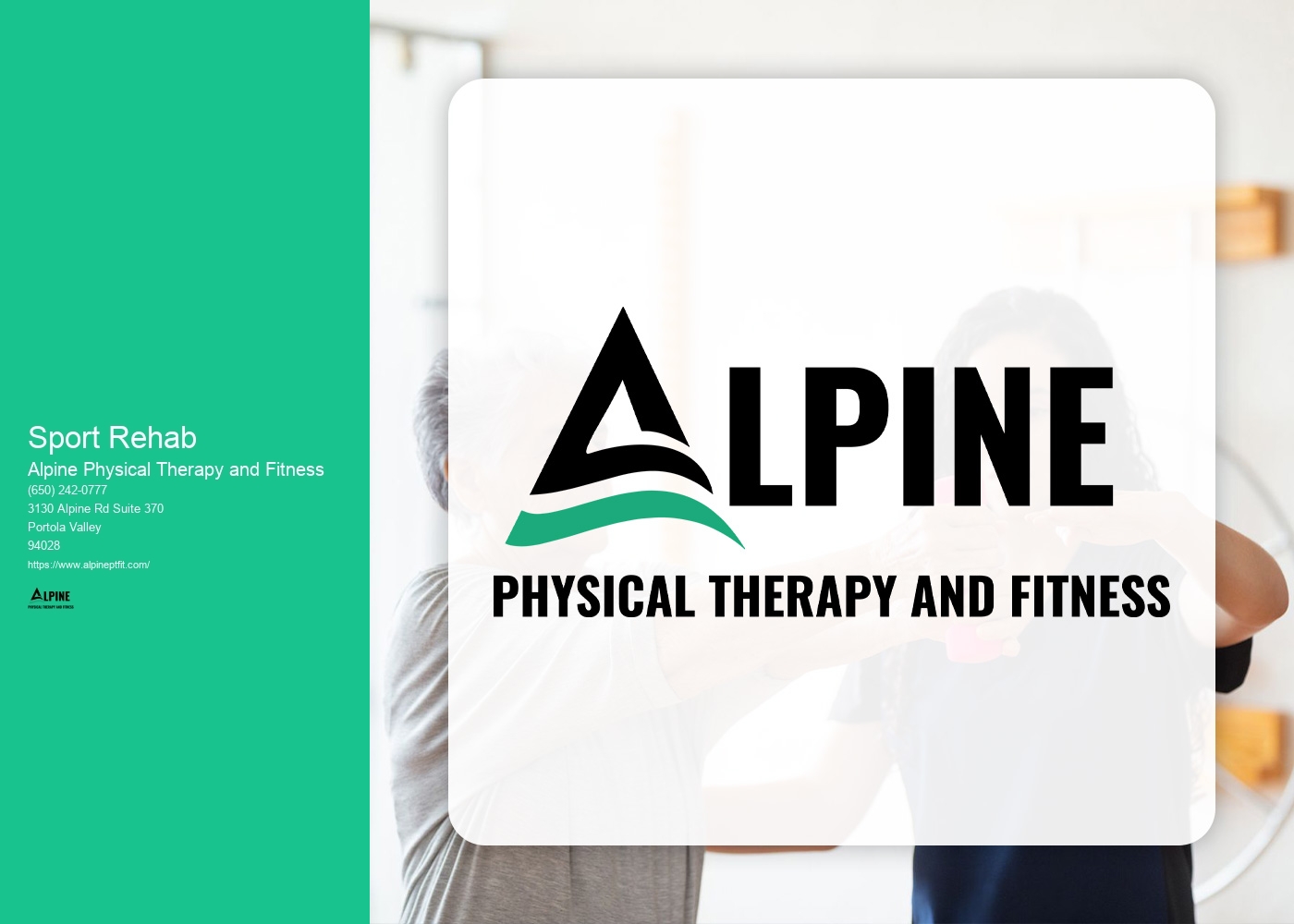

Sport rehab, also known as sports rehabilitation, is a specialized form of physical therapy that focuses on the treatment and prevention of sports-related injuries. While regular physical therapy aims to restore function and mobility to individuals with a wide range of conditions, sport rehab specifically targets athletes and active individuals who have sustained injuries during sports or exercise. The main difference between sport rehab and regular physical therapy lies in the tailored approach to the unique demands of sports and the specific needs of athletes.
The most common sports injuries that require rehab include sprains, strains, fractures, dislocations, and overuse injuries. Sprains and strains are common in sports that involve sudden movements or changes in direction, such as basketball or soccer. Fractures and dislocations can occur from high-impact collisions or falls, often seen in contact sports like football or rugby. Overuse injuries, such as tendonitis or stress fractures, are prevalent in sports that involve repetitive motions, like running or tennis. Sport rehab aims to address these injuries and help athletes regain strength, flexibility, and function to return to their sport safely.
The duration of sport rehab varies depending on the severity of the injury and the individual's response to treatment. In general, sport rehab can last anywhere from a few weeks to several months. Acute injuries may require more intensive rehab in the initial stages, while chronic or recurring injuries may require longer-term management and prevention strategies. The sport rehab process typically involves an initial assessment, followed by a personalized treatment plan that includes a combination of manual therapy, therapeutic exercises, and functional training. Progress is monitored regularly, and adjustments are made as needed to ensure optimal recovery.

Sport rehab utilizes a variety of techniques and exercises to facilitate healing and restore function. Manual therapy techniques, such as joint mobilization and soft tissue massage, are commonly used to reduce pain, improve range of motion, and promote tissue healing. Therapeutic exercises, including strengthening exercises, stretching, and balance training, are essential for rebuilding muscle strength, improving flexibility, and enhancing overall performance. Functional training, which involves sport-specific movements and drills, helps athletes regain their skills and confidence to return to their sport safely. Additionally, modalities such as heat, cold, electrical stimulation, and ultrasound may be used to complement the rehab process.
Yes, sport rehab can help prevent future injuries. One of the key goals of sport rehab is to address the underlying causes of the injury and identify any biomechanical or movement patterns that may contribute to the injury. By addressing these factors, sport rehab professionals can develop a comprehensive prevention plan that includes corrective exercises, injury prevention strategies, and education on proper technique and training methods. This proactive approach aims to minimize the risk of future injuries and optimize an athlete's performance.

Sport rehab professionals should have specific qualifications and certifications to provide specialized care to athletes. They should have a degree in physical therapy or a related field and be licensed to practice in their respective jurisdiction. Additionally, they may pursue additional certifications or specialized training in sports rehabilitation to enhance their knowledge and skills in this area. Some common certifications for sport rehab professionals include Certified Strength and Conditioning Specialist (CSCS) and Certified Sports Rehabilitation Specialist (CSRS). These certifications demonstrate a higher level of expertise in sports rehabilitation and ensure that the practitioner is well-equipped to provide effective care to athletes.
To find a reputable sport rehab facility or practitioner near you, there are several steps you can take. Start by asking for recommendations from your primary care physician, orthopedic specialist, or other healthcare professionals who specialize in sports medicine. They can provide valuable insights and referrals to trusted sport rehab providers in your area. You can also reach out to local sports teams, athletic trainers, or coaches who may have experience working with sport rehab professionals. Online directories and review websites can also be helpful in finding reputable sport rehab facilities, as they often provide patient reviews and ratings. When selecting a sport rehab facility or practitioner, consider factors such as their experience, credentials, and the specific services they offer to ensure they align with your needs and goals.

Aquatic physical therapy has been found to be highly beneficial for individuals with fibromyalgia. The buoyancy of the water helps to reduce the impact on the joints, allowing for gentle movement and exercise without causing excessive pain. The warm water also helps to relax the muscles and improve circulation, which can alleviate some of the symptoms associated with fibromyalgia, such as muscle stiffness and fatigue. Additionally, the resistance of the water provides a gentle form of resistance training, which can help to improve muscle strength and endurance. Aquatic physical therapy also provides a supportive and safe environment for individuals with fibromyalgia to exercise, as the water provides a cushioning effect and reduces the risk of falls or injuries. Overall, aquatic physical therapy can help individuals with fibromyalgia to improve their physical function, reduce pain, and enhance their overall quality of life.
Yes, the Alexander Technique can be effectively integrated into physical therapy for posture correction. The Alexander Technique is a holistic approach that focuses on improving body alignment, movement coordination, and postural habits. By incorporating the principles of the Alexander Technique into physical therapy sessions, therapists can help patients develop a greater awareness of their posture and movement patterns. This can lead to improved body mechanics, reduced muscle tension, and enhanced overall posture. The Alexander Technique can complement traditional physical therapy techniques by providing patients with tools to consciously adjust and maintain proper alignment and posture throughout their daily activities. By integrating the Alexander Technique into physical therapy, therapists can offer a comprehensive approach to posture correction that addresses both the physical and mental aspects of movement and alignment.
Manual therapy techniques have been shown to be effective in alleviating symptoms of temporomandibular joint dysfunction (TMJ). These techniques, which include mobilization, manipulation, and soft tissue techniques, aim to improve the range of motion, reduce pain, and restore normal function to the jaw joint. By applying specific manual pressure and movements to the affected area, manual therapists can help release tension, reduce muscle spasms, and improve joint alignment. Additionally, manual therapy can help address any underlying musculoskeletal imbalances or dysfunctions that may be contributing to TMJ symptoms. Overall, manual therapy techniques can provide significant relief for individuals suffering from TMJ, improving their quality of life and restoring normal jaw function.
There are several exercises that can help aging individuals maintain their independence. Strength training exercises, such as lifting weights or using resistance bands, can help improve muscle strength and prevent muscle loss. Balance exercises, such as standing on one leg or practicing tai chi, can help improve stability and reduce the risk of falls. Flexibility exercises, such as stretching or yoga, can help improve range of motion and maintain joint health. Endurance exercises, such as walking or swimming, can help improve cardiovascular health and overall stamina. It is important for aging individuals to consult with a healthcare professional before starting any exercise program to ensure it is safe and appropriate for their specific needs.
Yes, there are specialized techniques for treating infant torticollis. One commonly used technique is called passive stretching, where a healthcare provider gently moves the baby's head in different directions to help improve range of motion. Another technique is called active stretching, where the baby is encouraged to move their head on their own through play and exercises. Additionally, positioning techniques such as tummy time and using special pillows or supports can help to alleviate the symptoms of torticollis. It is important for parents to work closely with healthcare professionals to develop a personalized treatment plan for their infant, as each case of torticollis may require different interventions.